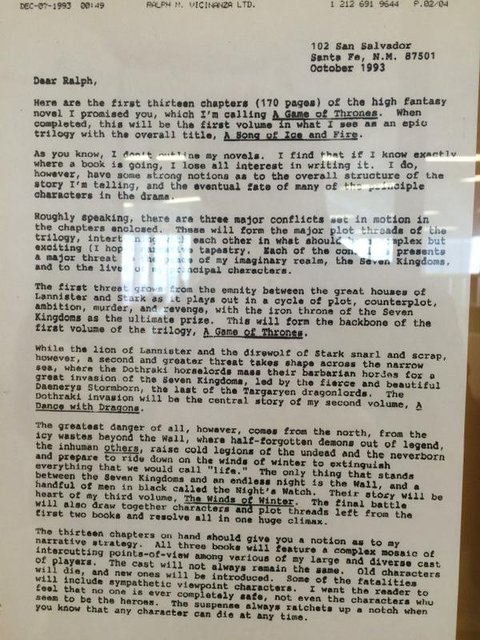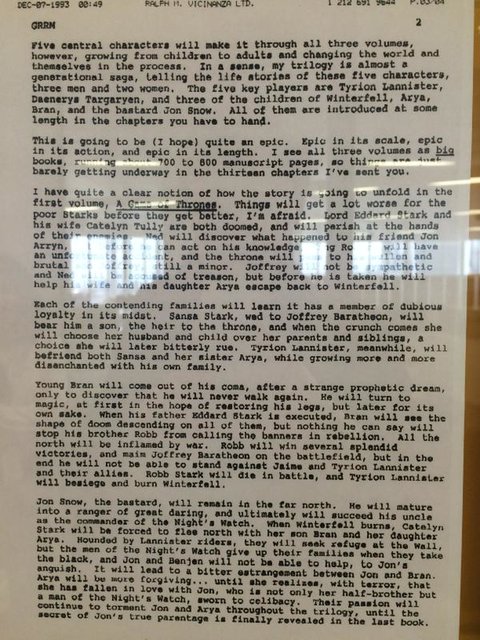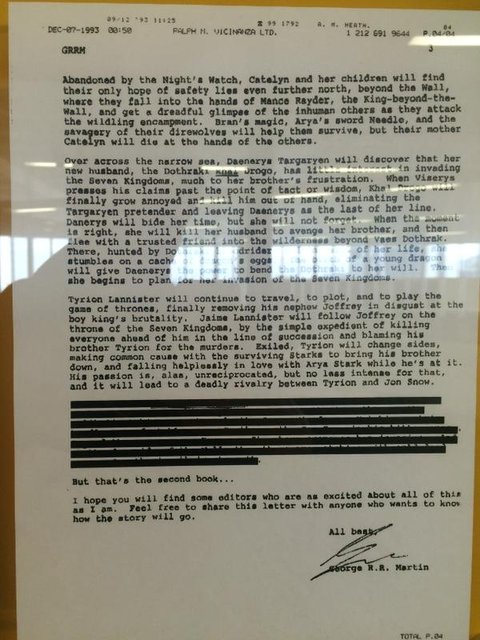In this episode, we discuss how to create a screenwriting treatment.
THE RIGHT METHOD
It needs to be said that despite this being one of the most important lessons in screenwriting: there hasn’t been a consistent ‘method’ that I’ve found in writing the ‘proper’ or ‘correct’ style of treatment. However, as I’ve mentioned here in the past – I’ve met writers who’ve sold on treatments alone – without having finished the actual screenplay. So, writing a good one is important.
Now to be fair, not every writer I’m speaking about sells for big dollars. Most of it comes down to contracts and negotiations, though I won’t get into those nitty gritty details here. What I can share, like most of these lessons, is what works for me. So, take it as you will but understand that there is no right method in writing a treatment.
There is only the objective: summarizing your script in a concise and easy-to-read fashion.
HOW I WRITE A TREATMENT
Remember, ‘The Ghost in the Machine’ script which I used as an example in my early lessons? Well, here it is again in treatment form – albeit in a rough-cut first draft:
Most of my treatments run about 5 pages. I don’t try and make anything too long, as I want treatments to be straight and to the point in an easy to read short pitch. Personally, I’ll admit that I’m not the best at pitching in person – but I can write a decent treatment, depending on the story objective. I’ve done treatments for comics and short stories as well and those can have different agendas or styles.
However, screenplays are very particular in format despite not having a ‘proper method’.
The General Format for a Screenplay Treatment:
- Title
- Name
- Logline, and/or Brief Summary
- Summaries of all your acts in an organized layout that suits your potential buyer’s needs.
Remember all that work we did in Monomyths and Story Circles? Well, here is where it shines – as your story structure basically becomes your treatment and plot of your story. The only difference is you can put in more details in your treatment – stuff to really sell your story.
ACT BREAKS
Usually, you need a three-act to a five-act structure for screenplays. Which seems like a lot until you realize, almost every sort of western styled writing relies on the ‘three-act’ method.
- Four-act structure, most people will divide the middle act in half (which three-acts already technically do, this is just the industry calling itself out).
- Five-act structure, you can see a two-part third act and a two-part middle.
- Six-act structure, which rarely happens, just divide all the acts in half.
It sounds complicated though is pretty straightforward.
Story Circles and Monomyths Act Breakdowns (Three-act structure):
- You – Call to Adventure
- Need – Refusal of The Call, Meeting The Mentor
Break into Act Two
- Go– Crossing The Threshold, Belly of The Whale
- Search– Road of Trials
Midpoint/Middle of Act Two
- Find– Meeting With The Goddess, Temptation
- Take – Atonement With The Father, Apostasis, The Ultimate Boon
Break into Act Three
- Return – Refusal of The Return, Magic Flight, Rescue from Without, Crossing the Return Threshold.
- Change– Master of Both Worlds
For even more step-by-step help. Here’s another tutorial from Studio Binder
GAME OF THRONES TREATMENT
Game of Thrones came back this weekend. Just in time to use this example!
For those who don’t know, Game of Thrones came back this past Sunday for its final season after a long two-year hiatus. It’s probably the most acclaimed and talked about series in the past decade of television. Yet even this cultural gem: started out as a treatment. In fact, most query letters are treatments.
TRANSCRIBED, IS A TREATMENT BY GEORGE R.R. MARTIN, WITH ORIGINALS POSTED JUST BELOW:
Dear Ralph,
Here are the first thirteen chapters (170 pages) of the high fantasy novel I promised you, which I’m calling ‘A Game of Thrones.’ When completed, this will be the first volume in what I see as an epic trilogy with the overall title, ‘A Song of Ice and Fire.’
As you know, I don’t outline my novels. I find that if I know exactly where a book is going, I lose all interest in writing it. I do, however, have some strong notions as to the overall structure of the story I’m telling, and the eventual fate of many of the principle characters in the drama. Roughly speaking, there are three major conflicts set in motion in the chapters enclosed. These will form the major plot threads of the trilogy, [unclear] each other in what should be a complex but exciting (I hope [unclear] tapestry. Each of the [unclear] presents a major threat [unclear] of my imaginary realm, the Seven Kingdoms, and to the live [unclear] principal characters.
The first threat grows from the emnity between the great houses of Lannister and Stark as it plays out in a cycle of plot, counterplot, ambition, murder, and revenge, with the iron throne of the Seven Kingdoms as the ultimate prize. This will form the backbone of the first volume of the trilogy, A Game of Thrones.
While the lion of Lannister and the direwolf of Stark snarl and scrap, however, a second and greater threat takes shape across the narrow sea, where the Dothraki horselords mass their barbarian hordes for a great invasion of the Seven Kingdoms, led by the fierce and beautiful Daenerys Stormborn, the last of the Targaryen dragonlords. The Dothraki invasion will be the central story of my second volume, A Dance with Dragons.
The greatest danger of all, however, comes from the north, from the icy wastes beyond the Wall, where half-forgotten demons out of legend, the inhuman others, raise cold legions of the undead and the neverborn and prepare to ride down on the winds of winter to extinguish everything that we would call “life.” The only thing that stands between the Seven Kingdoms and an endless night is the Wall, and a handful of men in black called the Night’s Watch. Their story will be [sic] heart of my third volume, The Winds of Winter. The final battle will also draw together characters and plot threads left from the first two books and resolve all in one huge climax.
The thirteen chapters on hand should give you a notion as to my narrative strategy. All three books will feature a complex mosaic of intercutting points-of-view among various of my large and diverse cast of players. The cast will not always remain the same. Old characters will die, and new ones will be introduced. Some of the fatalities will include sympathetic viewpoint characters. I want the reader to feel that no one is ever completely safe, not even the characters who seem to be the heroes. The suspense always ratchets up a notch when you know that any character can die at any time.
—
Five central characters will make it through all three volumes, however, growing from children to adults and changing the world and themselves in the process. In a sense, my trilogy is almost a generational saga, telling the life stories of these five characters, three men and two women. The five key players are Tyrion Lannister, Daenerys Targaryen, and three of the children of Winterfell, Arya, Bran, and the bastard Jon Snow. All of them are introduced at some length in the chapters you have to hand.
This is going to be (I hope) quite an epic. Epic in its scale, epic in its action, and epic in its length. I see all three volumes as big books, running about 700 to 800 manuscript pages, so things are just barely getting underway in the thirteen chapters I’ve sent you.
I have quite a clear notion of how the story is going to unfold in the first volume, A Game of Thrones. Things will get a lot worse for the poor Starks before they get better, I’m afraid. Lord Eddard Stark and his wife Catelyn Tully are both doomed, and will perish at the hands of their enemies. Ned will discover what happened to his friend Jon Arryn, [unclear] can act on his knowledge [unclear] will have an unfortunate accident, and the throne will [unclear] to [unclear] and brutal [unclear] Joffrey [unclear] still a minor. Joffrey will not be sympathetic and Ned [what appears to say] will be accused of treason, but before he is taken he will help his wife and his daughter Arya escape back to Winterfell.
Each of the contending families will learn it has a member of dubious loyalty in its midst. Sansa Stark, wed to Joffrey Baratheon, will bear him a son, the heir to the throne, and when the crunch comes she will choose her husband and child over her parents and siblings, a choice she will later bitterly rue. Tyrion Lannister, meanwhile, will befriend both Sansa and her sister Arya, while growing more and more disenchanted with his own family.
Young Bran will come out of his coma, after a strange prophetic dream, only to discover that he will never walk again. He will turn to magic, at first in the hope of restoring his legs, but later for its own sake. When his father Eddard Stark is executed, Bran will see the shape of doom descending on all of them, but nothing he can say will stop his brother Robb from calling the banners in rebellion. All the north will be inflamed by war. Robb will win several splendid victories, and maim Joffrey Baratheon on the battlefield, but in the end he will not be able to stand against Jaime and Tyrion Lannister and their allies. Robb Stark will die in battle, and Tyrion Lannister will besiege and burn Winterfell.
Jon Snow, the bastard, will remain in the far north. He will mature into a ranger of great daring, and ultimately will succeed his uncle as the commander of the Night’s Watch. When Winterfell burns, Catelyn Stark will be forced to flee north with her son Bran and her daughter Arya. Wounded by Lannister riders, they will seek refuge at the Wall, but the men of the Night’s Watch give up their families when they take the black, and Jon and Benjen will not be able to help, to Jon’s anguish. It will lead to a bitter estrangement between Jon and Bran. Arya will be more forgiving … until she realizes, with terror, that she has fallen in love with Jon, who is not only her half-brother but a man of the Night’s Watch, sworn to celibacy. Their passion will continue to torment Jon and Arya throughout the trilogy, until the secret of Jon’s true parentage is finally revealed in the last book.
—
Abandoned by the Night’s Watch, Catelyn and her children will find their only hope of safety lies even further north, beyond the Wall, where they fall into the hands of Mance Rayder, the King-beyond-the-Wall, and get a dreadful glimpse of the inhuman others as they attack the wilding encampment. Bran’s magic, Arya’s sword Needle, and the savagery of their direwolves will help them survive, but their mother Catelyn will die at the hands of the others.
Over across the narrow sea, Daenerys Targaryen will discover that her new husband, the Dothraki Khal Drogo, has little interest in invading the Seven Kingdoms, much to her brother’s frustration. When Viserys presses his claims past the point of tact or wisdom, Khal Drogo will finally grow annoyed and kill him out of hand, eliminating the Targaryen pretender and leaving Daenerys as the last of her line. Danerys [sic] will bide her time, but she will not forget. When the moment is right, she will kill her husband to avenge her brother, and then flee with a trusted friend into the wilderness beyond Vaes Dothrak. There, hunted by [unclear] of her life, she stumbles on a [something about dragon eggs] a young dragon will give Daenerys [unclear] bend [unclear] to her will. Then she begins to plan for her invasion of the Seven Kingdoms.
Tyrion Lannister will continue to travel, to plot, and to play the game of thrones, finally removing his nephew Joffrey in disgust at the boy king’s brutality. Jaime Lannister will follow Joffrey on the throne of the Seven Kingdoms, by the simple expedient of killing everyone ahead of him in the line of succession and blaming his brother Tyrion for the murders. Exiled, Tyrion will change sides, making common cause with the surviving Starks to bring his brother down, and falling helplessly in love with Arya Stark while he’s at it. His passion is, alas, unreciprocated, but no less intense for that, and it will lead to a deadly rivalry between Tyrion and Jon Snow.
[The next graph is blocked out.]
But that’s the second book …
I hope you will find some editors who are as excited about all of this as I am. Feel free to share this letter with anyone who wants to know how the story will go.
All best,
George R.R. Martin
Try This: Write A Treatment
This is your only assignment for the next three weeks:
- Create Your Story’s Treatment.
This is you writing your entire story in an outline from beginning to end. Use the Monomyth and Story circle methods to provide plot structure. Character sheets to provide descriptions and voice. World Building rules to provide hooks and exposition and twists to be revealed.
Basically, bring it all together in this assignment and write your story. Next week, I’ll talk about tools you can utilize for your screenwriting. Then, I’ll analyze some fiction and short stories for fun – using the Monomythic method. Afterward, I will take you step-by-step in writing the screenplay – though, I’ll be using this treatment you’re writing as your major guideline. So, use these three weeks to get it done.
Good luck, screenwriter.



